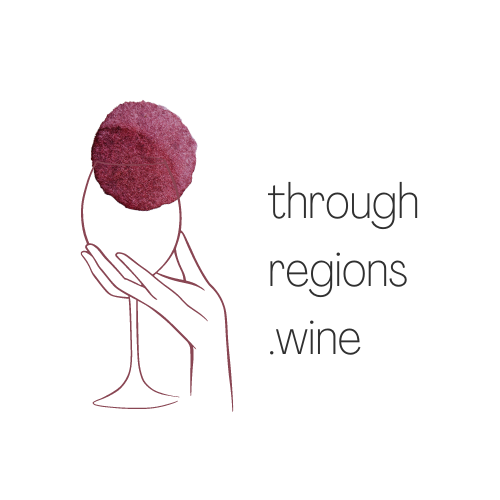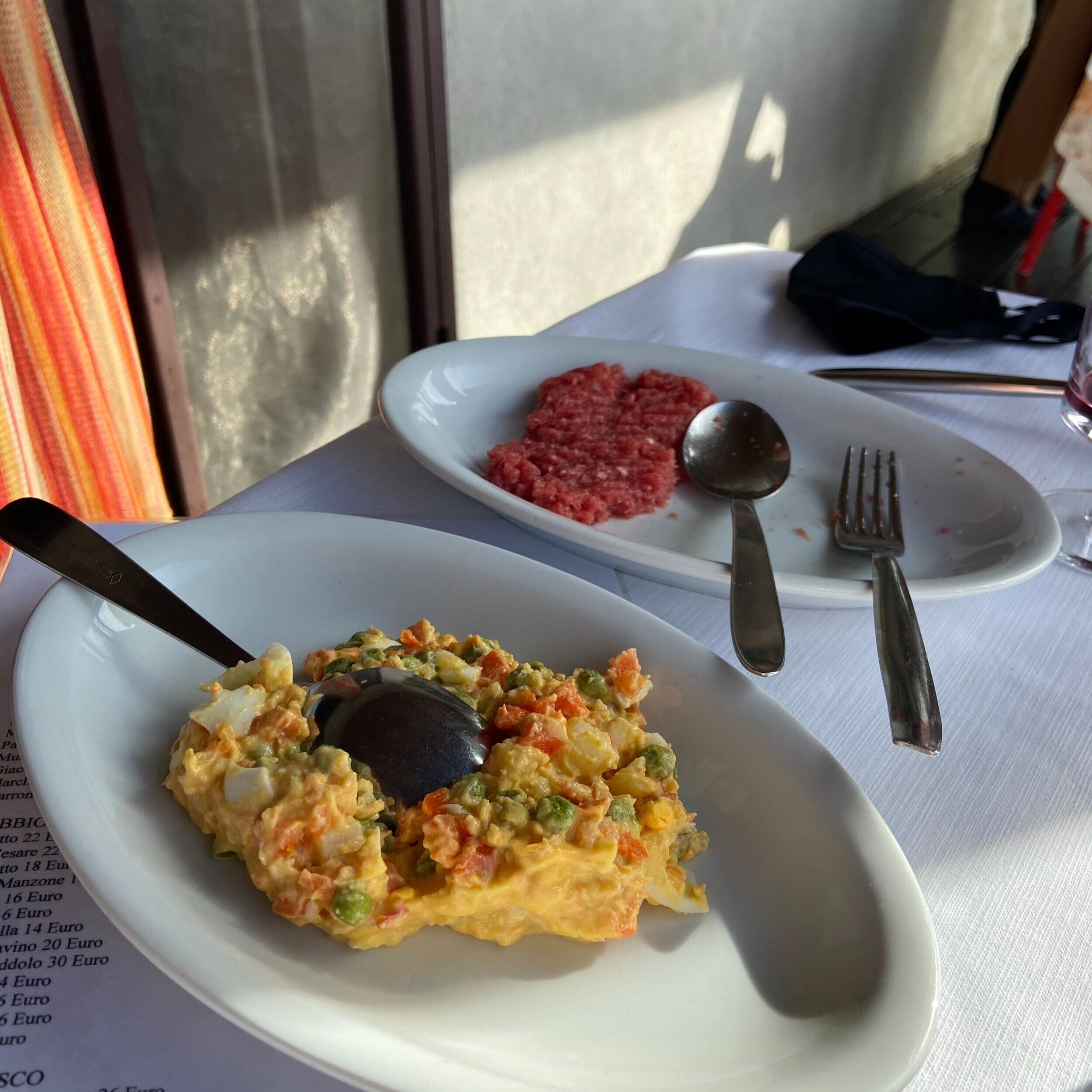Piedmont. Osteria Da Gemma
Osteria Da Gemma is a hidden gem of Piedmont. It’s not easy to find, but definitely one of the most famous restaurants in the region among locals and a must visit if you are looking for an authentic Piedmontese cuisine. Osteria Da Gemma is a simple, family-run inn housed in an old barn, where lovely 73 years old Gemma herself cooks home-style, traditional dishes from Piedmont.
Generous set menu has its roots in local culinary traditions. Osteria Da Gemma is recommended by the Michelin guide with the Michelin Plate: Good cooking. I went there only thanks to the recommendation from the host from Dimora San Carlo, by the way a brilliant place to stay when visiting Barolo region.
Osteria Da Gemma runs by different rules than other restaurants. When seated down you won’t get a menu, but you can have a look at the wine card. Except a house wine you can also choose from local labels, various kinds of Dolcetto, Barbera, Nebbiolo and Barbaresco in price range 10-38 €. Platters with food will be served to your table automatically and will just keep coming, from starters until desserts. Every table gets the same set menu and if you cannot finish some dish or just don’t want to eat one of the positions you can simply turn them down or leave on the table to be taken away. Food at Da Gemma’s is homemade, honest and abundant. You just keep eating next dishes and thinking to yourself how much it could cost and you are up for a very pleasant surprise as the whole meal is only 30 € per person. No matter how much or how little you will eat from platters served to your table.
When I visited Da Gemma I’ve tried absolute classics:
Carne Cruda – this is a beef tartar, but in Piedmont it’s served in a way complementing the delicate meat flavour. You won’t find there lots of ingredients that could cover coarsely chopped raw veal meat, it’s topped only with extra virgin olive oil, salt and pepper. The popular dish is served as an antipasto, best enjoy it with Dolcetto or Barbera!
Inslata Russa – Russian Salad made with boiled potatoes, carrots, peas, eggs and mayonnaise. It will sound awfully familiar to our Polish readers as it is Easter or Christmas holidays classic. Russian Salad is often served in the Piedmont as a starter. To get a unique taste Italian grandmas would often add anchovies to the freshly made mayonnaise. It is no coincidence that anchovies occupy a place of honor in many dishes that are symbols of Piedmontese cuisine. The Ligurian waters, which are not very rich in fish, are abundant in anchovies (alici), in a part of the coast along which the oldest salt road in Europe led from Liguria through Piedmont to northern Europe.
Vittello Tonnato – surprising combination of cooked or roasted veal and canned tuna. Thin slices of veal are spread ot on a plate and poured with a sauce of fresh mayonnaise mixed with shredded tuna, hard-boiled eggs, capers and anchovies.
Tajarin with ragu – Tajarin is the Piemontese version of tagliatelle. Unlike other types of egg pasta, these thin, golden strands are made with a higher proportion of egg yolks, resulting in a delicate texture and rich flavor. Tajarin were first served in Piemonte as early as the 1500s, often with a hearty meat ragù, poultry, or rabbit. Nowadays, despite humble origins it is often served with a simple, yet luxurious butter sauce and shavings of world-famous white truffles of Alba.
Agnolotti del Plin – This is small ravioli with big flavours, typically stuffed with meat and vegetables.
Fried fennel and roasted rabbit – arguably the most popular and widespread version of rabbit in Italian cooking is coniglio arrosto, which translates to roasted rabbit. The meat is braised rather than roasted, this technique guarantees it remains juicy as it develops an irresistibly caramelized skin.
Brasato – this is braised beef cooked in wine, sometimes with Barolo Barbaresco or Nebbiolo wine. Slow cooked and so tender that can be cut with a spoon.
Bunet – this is like a chocolate custard made with chocolate, almond cookies, eggs, and rum. It is quite decadent and perfect after a meal if a little bit of red wine is still in the glass.
Panna cotta with strawberry jam – The name panna cotta is not mentioned in Italian cookbooks before the 1960s, yet it is often cited as a traditional dessert of the northern Italian region of Piedmont.
Meringue with hazelnuts – a simple light meringue topped with a spoonful of fresh hazelnuts. Some say that the Langhe area in the Piedmont region have the best hazelnuts in the world!
Address: via Guglielmo Marconi, 6, 12050 Roddino CN, Włochy
Price: 30 €/person
Psst: Book in advance, it’s very difficult to get a table during the weekend for dinner, but you might find a spot for lunch. On a sunny day ask for a table at the terrace and admire a beautiful Piedmontese landscape with sharp, snow-capped peaks of Alps on the horizon.










